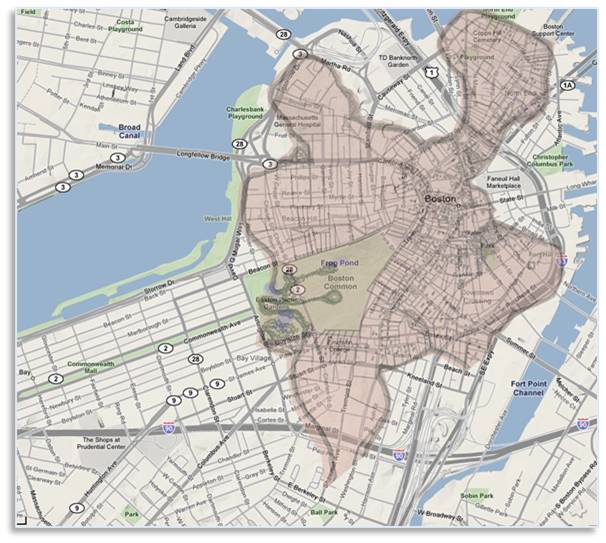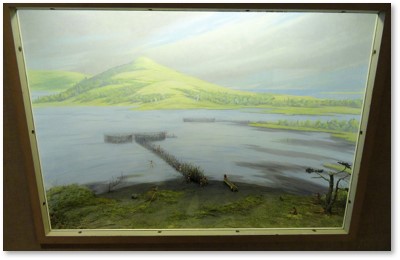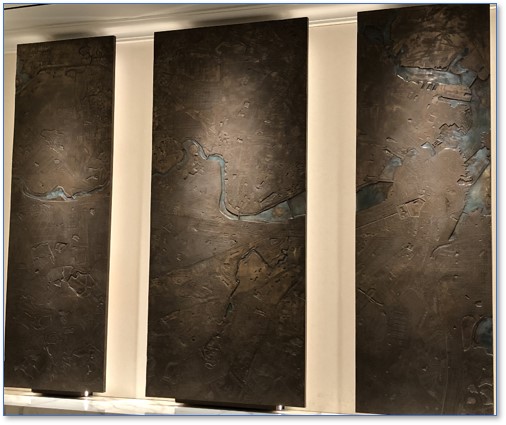To understand Boston’s history, you really need to look at maps. More than most cities, Boston’s topography has changed over time due to land making, wharfing out, reclaiming marshes, and cutting down hills. Today’s city bears small resemblance to the Shawmut Peninsula that greeted the Puritan settlers in 1630.
Even then, right at the beginning, the area’s topography played a big role in determining what Boston would look like. Having settled first in what is now Charlestown, the Puritans discovered the water there was brackish—tainted with salt from Boston Harbor. When the Rev. William Blackstone invited them to move to the Shawmut Peninsula with its multiple springs of good water, it changed how the city would grow and in what directions.
The Shawmut Peninsula
The Shawmut Peninsula was, as the name indicates, “A portion of land nearly surrounded by water, and connected with a larger body by a neck, or isthmus.” That isthmus, known as Boston Neck, ran along what became Washington Street and connected to the mainland.
A person standing on top of Beacon Hill could have looked around and seen water in almost every direction: Boston Harbor, the Atlantic Ocean, the Mill Pond, Charles River, Back Bay, the Fort Point Channel, South Bay, and Dorchester Bay. There was water, water everywhere but—when you also considered the multiple steep hills—very few places to build.
Demolishing the Hills
The Puritans were nothing if not industrious, so they sit about changing their new home. To make land on which to build their city, they cut down hills.
- Our Beacon Hill observer would drop 60 feet from the original summit to where it is today. The dirt taken from the top went into the Mill Pond, now the Bulfinch Triangle near Boston Garden.
-
You can actually see what they did to Copp’s Hill in the North End by standing on Charter Street and looking up Snow Hill Street. That big retaining wall on the left side marks where they stopped taking dirt for land-making at the edge of the Copp’s Hill Burying Ground. That dirt also went into the Mill Pond as well as underneath Commercial Street.
-
And you can’t stand on Fort Hill at all because they took it down completely. The International Place office tower marks where Fort Hill used to be. The former hill now underlies Atlantic Avenue from Rowe’s Wharf to Lewis Wharf.
Bring On the Maps
Keeping track of all these changes, and the subsequent modifications to the peninsula’s outline and shoreline, is where the maps come in. Plotting the old maps against maps of the new city thus becomes a fascinating occupation.
Sometimes you can find such maps just by walking around the city but two of my favorites have disappeared.
-
A medallion in the floor of the Boston Public Library’s Johnson Building was removed during renovations to open the library out to Boylston Street. It went into storage, from which it has never emerged.
-
A map on the wall of a building at the corner of Cross Street and Hanover Street made a convenient place for me to explain the changing topography to guests on walking tours. Alas, when I went by recently, that map had disappeared. Where did it go? Probably into a dumpster.
You can find maps of the city here and there just by keeping your eyes open but they typically show Boston as it is now.
-
Several panels behind the registration desk at the Langham Hotel, depict the contemporary city with the water colored blue.
-
The new View Boston at the top of the Prudential Center has a very large, three-dimensional map of Boston that’s current with the new buildings that have gone up. Lights sweep from left to right, showing the city from daytime to nighttime and back again. It’s impressive.
-
Another up-to-date scale model of the city is on display at the BSA Space on Congress Street.
A reader You might know of others that I haven’t discovered yet.-
Cartographic Books
Because I am not a cartographer, I turn for maps to the people who have put in astonishing amounts of research to create detailed maps of Boston Then vs Boston Now. If you are interested, check these out:
-
“
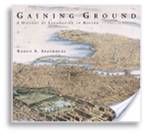 Gaining Ground” by Nancy Seasholes. This coffee-table book has the best maps I’ve seen comparing the city’s neighborhoods at different periods in history. New buildings overlay old structures and shorelines in an understandable format. The maps have lots of fascinating details. If you ever wondered, “What used to be here?” this book belongs on your shelf.
Gaining Ground” by Nancy Seasholes. This coffee-table book has the best maps I’ve seen comparing the city’s neighborhoods at different periods in history. New buildings overlay old structures and shorelines in an understandable format. The maps have lots of fascinating details. If you ever wondered, “What used to be here?” this book belongs on your shelf. -
“Boston: As Topographical History” by Walter Muir Whitehill and Lawrence W. Kennedy. While not as visually oriented as “Gaining Ground,” this book has plenty of maps and photographs to peruse and ponder.
-
“Mapping Boston” edited by Alex Krieger and David Cobb. I don’t own this one (yet). “The book includes both historical maps of the city and maps showing the gradual emergence of the New England region from the imaginations of explorers to a form that we would recognize today. Each map is accompanied by a full description and by a short essay offering an insight into its context.”
Places to Go for Maps
-
The Normal B. Leventhal Map and Education Center at the Boston Public Library’s central branch in Copley Square. I find it ironic that the same building that once held a beautiful Then-vs-Now medallion also houses Boston’s foremost cartographic resource. While the center cover maps from all over the world, it does have both extraordinary collection and a very responsive staff to help you find what you need.
- The Bonner Map: This map, which resides in the collection at the Massachusetts Historical Society, is the only known copy of the third state of Capt. John Bonner’s 1722 map, likely published in 1725.
-
The Mapparium at the Christian Science Complex: You have to see this place to believe it: a stained-glass world globe that you walk into on a glass bridge to watch a sound-and-light show. It’s amazing.
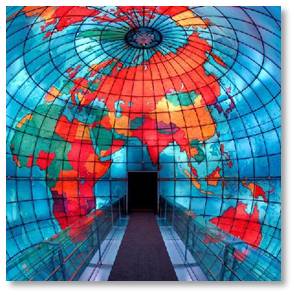 Maps on My To-Do List
Maps on My To-Do List
A reader has also pointed me to three places:
-
10 St. James Street / 75 Arlington Street for the maps on the lobby floor.
-
Map of Boston Harbor Islands at the corner of the Moakley Courthouse next to the Northern Avenue Bridge.
-
World Maps store at 1731 Massachusetts Avenue, Cambridge.
I have put these on my To Do list. If you know of others, please let me know and I will add them to the list for future posts.
